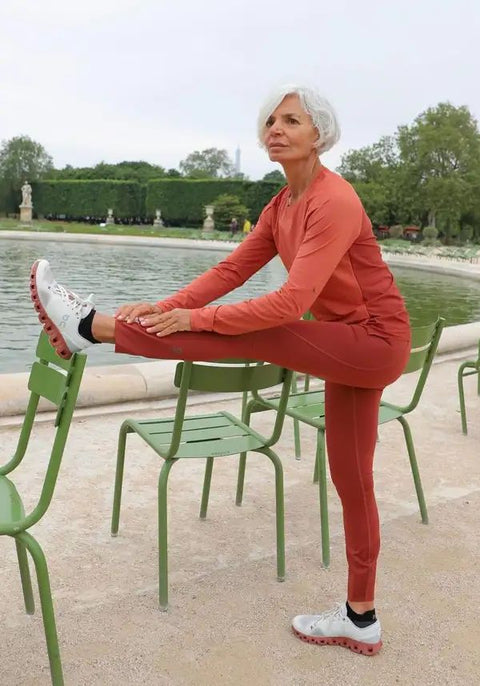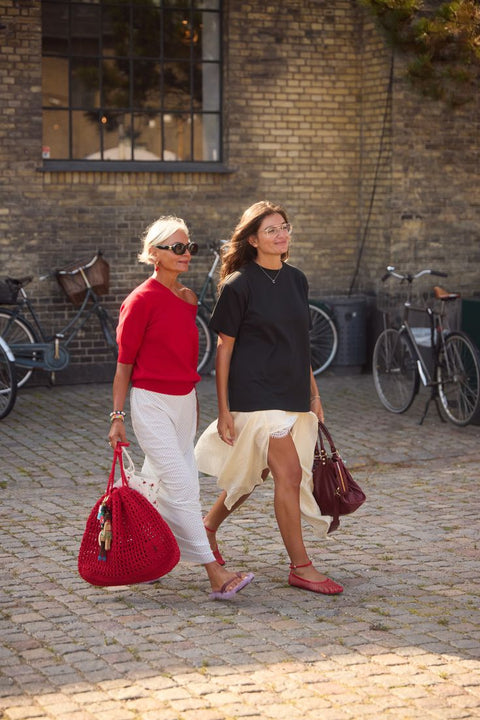As we age, our bones tend to lose density, increasing the risk of fractures and osteoporosis. Maintaining strong bones after 50 is essential for an active and independent life . Fortunately, there are simple exercises that can help you strengthen your bones, improve your balance, and increase your flexibility—all without the need for expensive equipment or complex routines.
Bone health
Bone tissue is constantly being renewed. Until the age of 30, the body produces more bone than it loses. However, after the age of 50, especially in postmenopausal women due to the decrease in estrogen, the process of bone loss accelerates. According to the According to the National Osteoporosis Foundation, approximately one in two women and one in four men over the age of 50 will experience an osteoporosis-related fracture in their lifetime.
Exercise is a very powerful tool to combat this loss of bone density. Regular physical activity not only stimulates the formation of new bone, but also improves balance and reduces the risk of falls.
Low-impact exercises to strengthen bones
Below are some easy and effective exercises that any woman over 50 can incorporate into her daily routine to maintain bone health:
1. Brisk walks
Walking is one of the simplest and most effective ways to maintain strong bones. Because it's a weight-bearing exercise (our body weight), it stimulates bone density in the legs, hips, and spine. Dedicate at least 30 minutes a day to brisk walking. If you're just starting out, start with 10-15 minute sessions and gradually increase the duration.
2. Climb stairs
Skip the elevator as part of your daily routine…start by climbing a few floors, and then eventually complete all your journeys without using it, because going up and down stairs is an excellent exercise for strengthening the bones in your legs and hips . This exercise also improves cardiovascular health. If you don't have access to stairs, you can use a step or platform to simulate the movement.
3. Tai Chi
Tai chi combines gentle movements with a focus on balance and posture. According to some studies, this ancient practice can reduce the risk of falls in older adults by up to 45%. It also helps maintain bone density by working with body weight.
4. Yoga
Yoga improves flexibility, strengthens muscles, and promotes bone health. Poses such as the tree pose (Vrksasana) or the warrior pose (Virabhadrasana) directly target the bones of the lower extremities and spine. Practicing yoga regularly also improves balance, reducing the risk of falls.
5. Lifting light weights
Resistance training with light weights or elastic bands helps strengthen bones by increasing tension. Start with 1-2 kg weights and perform simple exercises such as bicep curls, triceps extensions, and lateral raises. You can find many practical exercises online or in our blog .
6. Dance
Dancing is not only fun, but also a great way to strengthen your bones and improve your balance. Styles like salsa, tango, or even aerobic dance offer bone benefits and also lift your mood.
7. Balance exercises
Improving your balance is crucial to preventing falls that can lead to fractures. Try simple exercises such as standing on one foot for 10-20 seconds, alternating between legs. You can use a chair for support if necessary. You'll find exercises online and on our blog.
8. Swimming and aquatic exercises
Although water exercises don't put the same strain on bones as land-based activities, they're excellent for strengthening the muscles that support the bones. Aquafitness classes or simply walking in the water are ideal options for those with joint problems.
Some tips for incorporating exercise into your daily routine:
Consult your doctor : Before starting any exercise program, especially if you have pre-existing conditions, you should consult your doctor.
Listen to your body: If you feel pain or discomfort, reduce the intensity or stop. Exercise shouldn't cause you harm; you may experience some soreness, but not pain.
Set realistic goals: Start with short sessions and gradually increase the duration and intensity.
Socialize : Participating in group classes or walking with friends can make exercise more enjoyable and motivating.
Combine different exercises : Incorporating different exercises prevents boredom and guarantees a comprehensive body workout.
Nutrition and supplementation to complement exercise
Exercise is only one part of caring for your bone health; starting at age 50, it is essential to consume foods rich in calcium and vitamin D to strengthen your bones .
Dairy products such as milk, cheese, and yogurt are excellent sources of calcium. Fatty fish such as salmon and mackerel also provide vitamin D, which is essential for calcium absorption. Leafy green vegetables, such as spinach and kale, also benefit bone health.
Supplement your diet with nuts, seeds, and fortified foods and maintain adequate hydration.
It is advisable to take supplements to combat some deficiencies due to the lack of estrogen, we recommend that you do Our test will help you find out what stage of menopause you're in and which supplements will help you live a fuller, healthier life.
Additional benefits of regular exercise
In addition to keeping bones strong, regular exercise offers numerous benefits:
- Improves balance and coordination: Reduces the risk of falls and injuries.
- Muscle strengthening: Strong muscles support bones better.
- It's good for your mental health: Physical activity releases endorphins, improving your mood and reducing stress.
- Prevents disease: Exercise helps control weight, reduces the risk of cardiovascular disease, and improves overall health.
- Keeping your bones strong also contributes to a healthy sex life . Regular physical activity improves circulation, flexibility, and overall well-being, key factors for an active and satisfying sex life. Additionally, strengthening your muscles and bones helps maintain the confidence and energy needed to enjoy sex at this stage.
Remember that it's never too late to start, and that with consistency, dedication, and care, you can strengthen your bones and enjoy a better quality of life in the future.
Literature
- National Osteoporosis Foundation. "Exercise for Strong Bones." - https://www.nof.org](https://www.nof.org
- Mapfre, C. (2024, May 9). Exercise for osteoporosis | Club MAPFRE. Club MAPFRE, Savings and Unique Services for Clients | Club MAPFRE. https://www.mapfretecuidamos.com/consultas-socios/ejercicio-y-osteoporosis/
-Harvard Health Publishing. "The Best Exercises for Osteoporosis." https://www.health.harvard.edu](https://www.health.harvard.edu
-Mayo Clinic. "Osteoporosis: Prevention and Treatment." https://www.mayoclinic.org](https://www.mayoclinic.org)
- Mapfre, C. (2024a, April 9). Exercises to strengthen joints | Club MAPFRE. Club MAPFRE, Savings and Unique Services for Clients | Club MAPFRE. https://www.mapfretecuidamos.com/consultas-socios/ejercicios-para-foralecer-articulaciones
- International Osteoporosis Foundation. "Exercise Recommendations." [https://www.iofbonehealth.org](https://www.iofbonehealth.org)
Madequa - Madecua




Comments (0)
There are no comments for this article. Be the first one to leave a message!